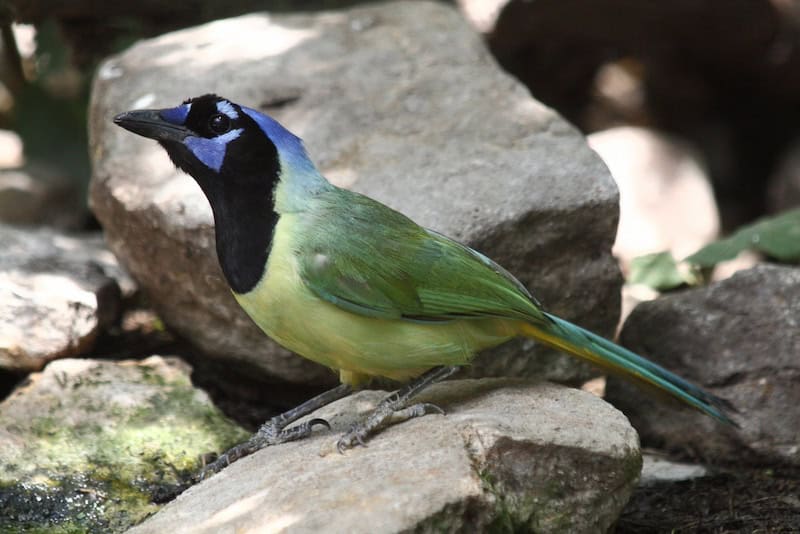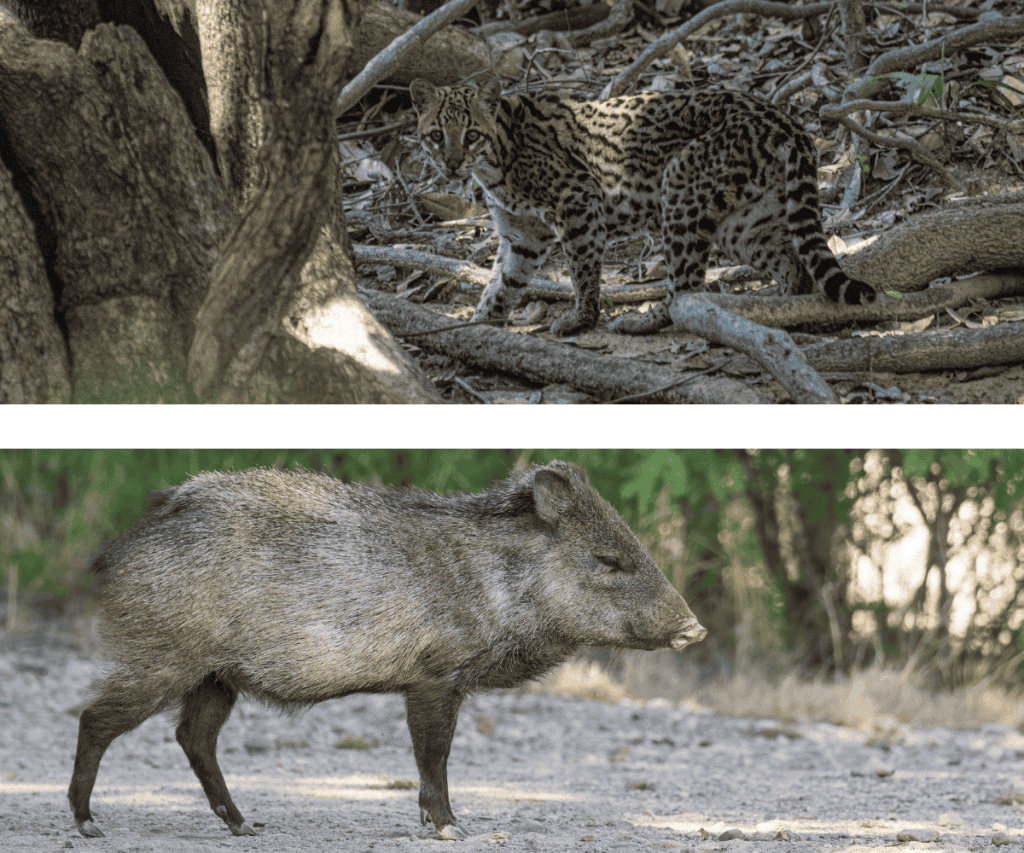
A backyard in Texas recently became the epicenter of birding news when the first naturally occurring hybrid between a blue jay and a green jay was spotted near San Antonio. See photos and read more here →
The discovery surprised many—especially those who didn’t even realize a bird called a green jay existed. But for those of us who know and love the wildlife of South Texas, the green jay is a favorite. With vivid green wings, a bright blue face, and bold black markings, this tropical beauty is just one of the many reasons we love exploring the Lower Rio Grande Valley.
This region of South Texas is a remarkable ecological crossroads where North American and tropical wildlife meet. The area’s subtropical climate and proximity to Mexico allow species typically found farther south to cross the border and thrive in the U.S. The Lower Rio Grande Valley lies farther south than any part of the mainland U.S. outside southern Florida, yet its dry, brushy landscape supports a completely different—and uniquely diverse—array of plants and animals.
The habitats here are varied and rich. South Texas brush country and the riparian forests along the Rio Grande provide shelter to hundreds of species, including rare birds, butterflies, and mammals. More than 500 bird species have been recorded in the region, along with 300 species of butterflies. The Valley is also home to over 1,200 species of plants.

Among the stars of the region’s wildlife is the green jay. Found in the U.S. only in deep South Texas, this intelligent and social bird lives in family groups and forages for insects, seeds, and fruit in dense woodland. Its dazzling colors and unique vocalizations make it stand out—even in a region known for striking species.
The ocelot is another South Texas treasure. Once found across much of the southern U.S., these small, elusive wild cats are now mostly limited to the thick, brushy woodlands of the Lower Rio Grande Valley. Fewer than 100 are believed to remain in the region. Their survival depends on large tracts of dense habitat where they can safely raise their young and hunt small prey like rodents and birds. Though rarely seen, simply knowing these secretive cats still exist here adds a special sense of wilderness to the area.
More commonly spotted is the javelina, or collared peccary. These pig-like mammals travel in small groups and are well adapted to the arid brushlands. They have coarse blackish-gray fur with a lighter collar, and when disturbed, they emit a strong musky odor from a scent gland near the tail. Though often shy, javelinas are an important part of the South Texas ecosystem.
Visitors to the Valley often describe it as feeling like a step into another country—and in many ways, it is. Cultural influences blend across the border, and so does the wildlife. Species common in Mexico, such as the buff-bellied hummingbird or the plain chachalaca, reach their northern limit here. With no major mountain ranges or oceans in the way, animals can and do cross into Texas, sometimes just for a season.
Protecting the region’s habitat is essential—not only for preserving biodiversity, but also for supporting ecotourism. The Valley’s growing network of national wildlife refuges, state parks, and private nature centers offers accessible, well-maintained opportunities for visitors to experience this rare mix of subtropical and temperate wildlife.
We’re heading back to South Texas in 2026, and we’d love for you to join us. We have two upcoming group trips—each designed to take you straight into the heart of the Valley’s most vibrant wildlife areas:
→ Birding and Beers in South Texas – 4 days in February
A fun, fast-paced getaway combining world-class birding with local brews.
→ Birding the Rio Grande Valley of Texas – 5 days in March
A deeper dive into the region’s incredible birdlife and unique ecosystems.